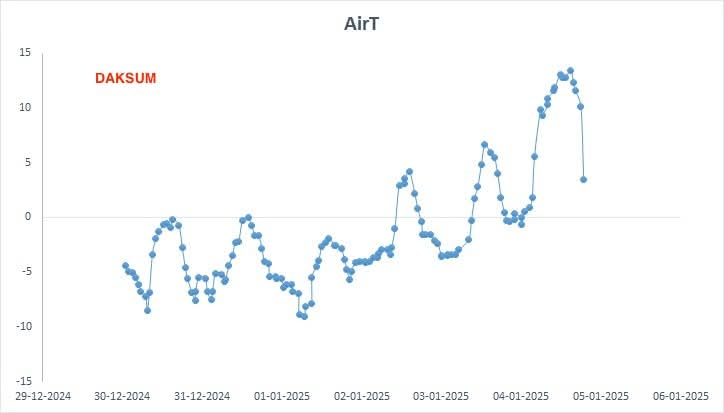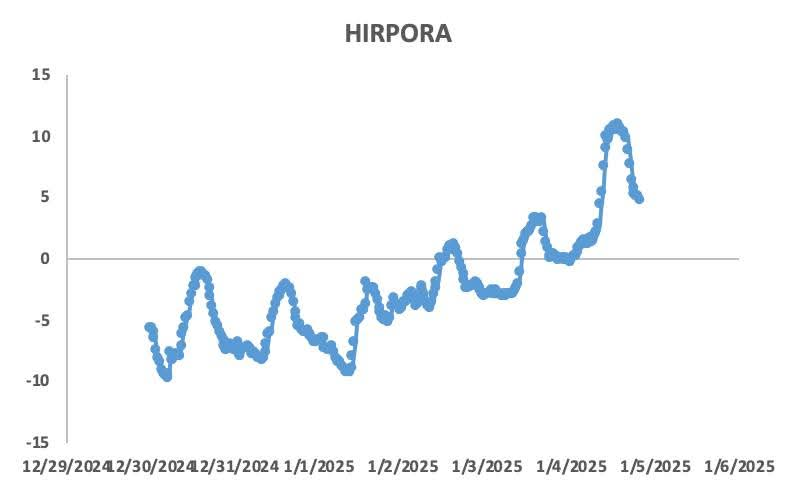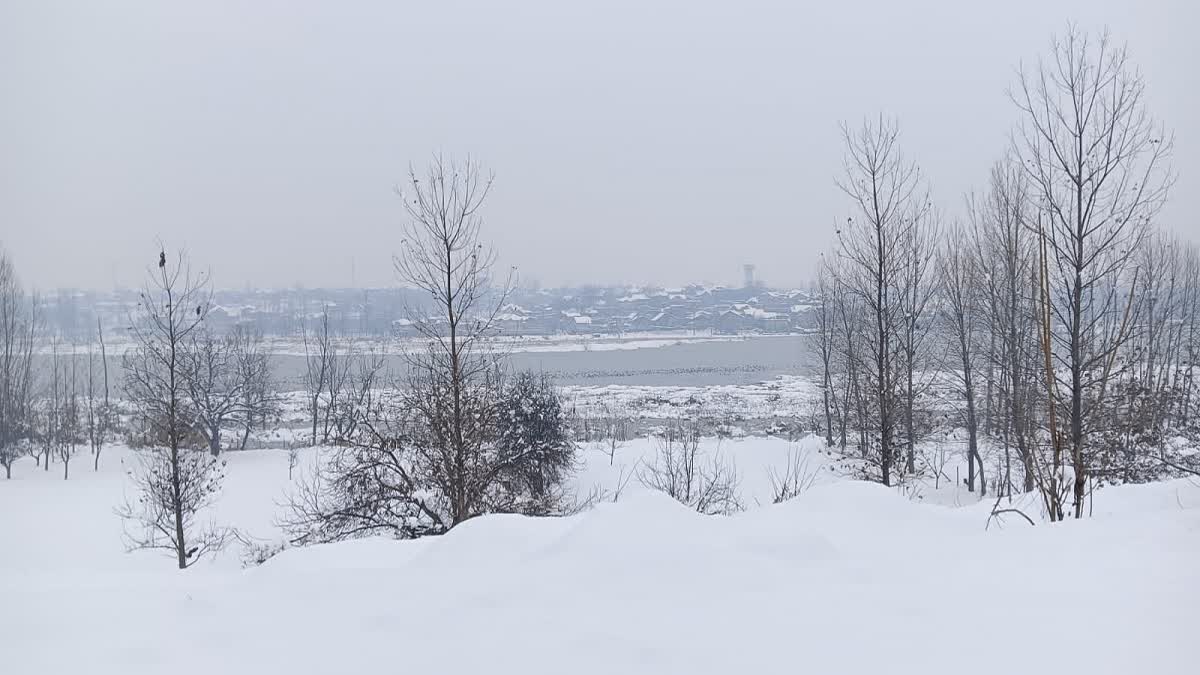Srinagar: Amid sub-zero temperatures in Kashmir due to the ongoing harshest winter period ‘Chillai Kalan’, several places in the southern part of the Valley witnessed a rapid temperature spike on Saturday, resulting in the melting of snow, which shocked the residents.
Major changes were witnessed in Anantnag district's Kokernag township where the picturesque forest area is home to Jammu and Kashmir's freshwater trout farm and several meadows, as well as various sheep-rearing farms, the largest of which is in Daksum.
The area of Daksum, Ahlan Gadole, witnessed a bright shine, blue sky, and warm temperatures on January 4, while Gulmarg and Pahalgam, the two other famous winter tourist spots in Kashmir, also recorded an increase in day temperature. The bizarre pattern has baffled people since it is taking place in Chillai Kalan, the 40 days of the harshest winter in Kashmir beginning December 21.
Day temperature above normal
The India Meteorological Department (IMD) reveals that the Gulmarg manual observatory recorded a maximum temperature of 7 degrees Celsius, which is 5 degrees above normal temperature; Pahalgam recorded 9 degrees Celsius, 3.3 degrees above normal, on Saturday (January 4). Kokernag recorded a temperature of 6.7 degrees Celsius, an increase of 3.3 degrees.
The IMD adds that automatic stations of Kulgam and Anantnag also showed slightly higher temperatures since January 2. Amid rumour mongering and many speculations being spread by netizens on social media about the unusual weather pattern, the weather department issued a clarification, explaining the change.
“Southeasterly winds have been prominent since the last three days, as indicated by wind analysis of different models, and are relatively warm and moist as compared to northerly/northwesterly (dry and cold) winds, and the same was observed over many manual and automatic weather stations of the Kashmir Division,” said Mukhtar Ahmad, Director of the Meteorological Department (MeT) Srinagar.
Expert Analysis On Unusual Rise in Temperature
Experts say such a rapid increase in temperature during the cold is due to warm air advection. Kashmir’s renowned environmental expert and glaciologist, Prof Shakil A Romshoo, said the warm air advection observed over the south Kashmir region on January 4 led to a rapid increase in temperature and significant snowmelt on a Saturday afternoon.
“Contrary to speculations and rumours on social media, this phenomenon is unrelated to volcanic, tectonic, or hot spring activity in the region,” he said.
“The air-mass transformation led to a strong surface-based temperature inversion, often contributing to dense fog. Combined with warm-air advection, usually associated with western disturbances, easterlies, and other air masses, these atmospheric processes increased heat flux from the atmosphere, raising surface temperatures by an average of 10 degrees in a single day in some parts of south Kashmir,” he said.
Prof Romshoo, who is also Vice Chancellor of the Islamic University of Science and Technology, Awantipora, said the air advection varied within south Kashmir and the temperature profiles of Daksum, Matigawran, and Hirpora reflect warm-air advection. However, IUST (Awantipora) and many other stations in south Kashmir don’t show any warm-air advection.


Understanding Warm Air Advection
It’s the process by which atmospheric motion transports warm air from a high-temperature region to a colder one (associated with westerlies, easterlies, and other airmass transport), leading to a steady rise in temperatures as the warmer air displaces the colder air, Prof Romshoo said.
“The role of cloud cover, longwave radiation, and turbulent heat flux further contributed to the localised warming observed in the region,” he adds. The Kashmir Valley is going through the coldest season of the winter, ‘Chillai Kalan,’ 40 days during which the temperature decreased to minus 9 in the Srinagar and Shopian districts in the initial days.
However, the snowfall witnessed in the last week of December last year led to an increase in temperature from sub-zero, which brought relief from harsh cold and dry spells.
Read More



